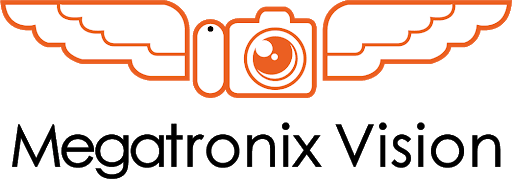Introduction: The Directorate General of Civil Aviation (DGCA) in India has developed thorough standards and safety measures for drone operators in response to the growing use of drones in a variety of industries. These regulations seek to protect national security, privacy, and public safety while promoting the responsible and safe use of drones.
An Overview of the Function of the DGCA
The regulatory agency in charge of overseeing civil aviation in India is the Directorate General of Civil Aviation (DGCA). The DGCA, which works under the Ministry of Civil Aviation, develops and puts into effect rules, guidelines, and standards to guarantee effective and safe air transportation operations. It is in charge of several facets of aviation, such as air traffic services, airport regulations, pilot and engineer licensing, airworthiness, and aircraft operations. The principal aim of the DGCA is to foster and preserve a civil aviation system in India that is safe, secure, and sustainable, in compliance with global aviation norms established by entities like the International Civil Aviation Organization (ICAO).
Unmanned Aircraft System Classification: The maximum total weight of an unmanned aircraft system, including payload, is used to classify these systems:
- – Nano unmanned aircraft system: 250 grams or less in weight.
- – Micro unmanned aircraft system: Gross mass greater than 250 grams and less than 2 kg.
- – Small unmanned aircraft system: Max weight of 25 kg and max weight of 2 kg.
- – Medium unmanned aircraft system: Max weight of 150 kg and max weight of 25 kg.
Zone Divisions for Unmanned Aerial Systems: Indian airspace is divided into three zones under the Drone Regulations 2021: Red Zone, Yellow Zone, and Green Zone. Below is a summary of every zone:
Red Zone:
The airspace over Indian territory or seas, including designated installations or announced port limitations outside of territorial waters, is referred to as the “Red Zone.” In this area, unmanned aircraft system operations are limited to the Central Government alone. Drone operations are subject to severe limitations, and certain parameters are established.
Yellow Zone:
The airspace above Indian territory or land areas is known as the Yellow Zone. Operations of unmanned aircraft systems are prohibited in this area and need authorization from the appropriate air traffic control body. Airspace above 200 feet or 60 meters within a lateral distance of 8 to 12 kilometers from the boundary of an operational airport and airspace above 400 feet or 120 meters in designated green zones are included in the Yellow Zone.
Green Zone:
Up to a vertical distance of 400 feet, or 120 meters, the airspace above Indian territory or land areas is included in the Green Zone. It encompasses regions that aren’t marked as Red or Yellow Zones on the map of drone airspace. Furthermore, the Green Zone encompasses airspace up to a vertical height of 200 feet, or 60 meters, above the region situated between 8 and 12 kilometers on either side of the perimeter of an airport that is in operation.
Drone Airspace Chart and Essential Elements:
On September 24, 2021, the Central Government, led by Prime Minister Shri Narendra Modi, made available an interactive map of drone airspace on the DGCA’s digital sky platform. Some of the map’s salient features are:
– Interactive Interface: The drone airspace map allows users to visually identify yellow and red zones across India.
– Green Zone: It encompasses airspace up to 400 feet and areas within 8-12 km from the perimeter of an operational airport up to 200 feet.
– Permission: Free Operations: In the green zones, drones weighing up to 500 kg can operate without seeking permission.
– Yellow Zone: Operations in this zone require permission from relevant air traffic control authorities and have specific height restrictions near airports.
– Reduction of Yellow Zone: The yellow zone has been reduced from a 45 km radius to 12 km from the airport perimeter.
– Red Zone: Drone operations in the red zone are strictly prohibited without permission from the Central Government.
– Modification of Airspace Map: Authorized entities can modify the airspace map as needed.
– Regular Checking: Drone operators must regularly check the airspace map for any changes in zone boundaries.
– Accessibility: The drone airspace map is freely accessible on the digital sky platform without login credentials.
Registration of Unmanned Aircraft Systems:
Drone operators are required to register their unmanned aircraft systems on the digital sky platform and obtain a unique identification number (UIN) unless exempted under the Drone Rules, 2021. The DGCA maintains a registration record of all UIN-issued unmanned aircraft systems.
Do’s and Don’ts for Drone Flying:
To ensure safe and responsible drone flying, the following guidelines should be followed:
Do’s:
– Obtain a Unique Identification Number (UIN) from the DGCA.
– Seek pre-flight permission from the Digital Sky Platform.
– Ensure compliance with safety conditions.
– Be cautious of mobile device interference and signal blockage.
– Limit flights to daytime hours and monitor weather conditions.
– Stay informed about changes in climatic situations.
– Follow all guidelines and regulations for flying drones.
– Conduct thorough research before investing in a drone.
– Understand operational and regulatory aspects before each flight.
– Respect airspace restrictions and No Drone Zones.
– Choose flight locations away from airports and heliports.
– Respect people’s privacy.
– Maintain a log of flights.
– Notify authorities in case of incidents or accidents.
Don’ts:
– Exceed altitude limits specified for different drone categories.
– Fly drones near airports, heliports, and crowded areas without permission.
– Operate drones over government facilities, military bases, or no-drone zones.
– Fly over private property without permission.
– Operate in regulated airspace near airports without proper approval.
– Use drones for carrying or dropping hazardous material.
– Operate drones under the influence of drugs or alcohol.
– Fly drones from moving vehicles, ships, or planes.
